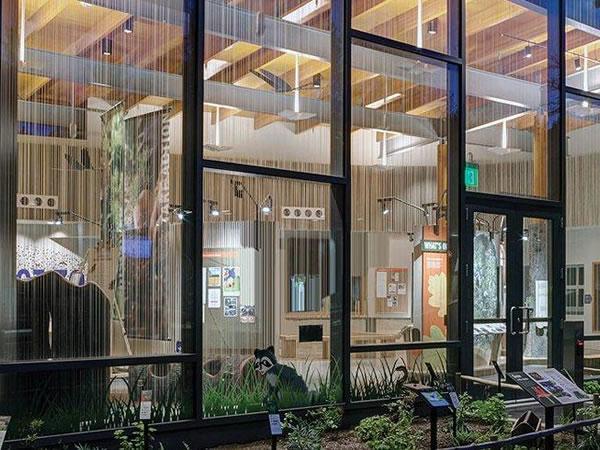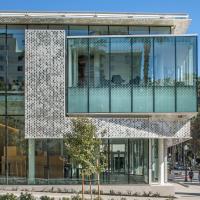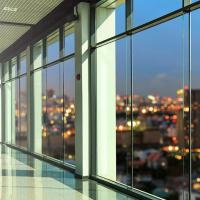
Date: 15 August 2019
With an estimated 1 billion bird deaths annually from collisions, certain building materials can make a huge difference.
To help solve the problem of bird collisions, advocacy groups, standards organizations and product manufacturers are working with states, cities and municipalities. In recent years glass manufacturers have expanded their product lines to include bird-friendly options that satisfy aesthetic, performance and bird safety objectives.
Governments and advocacy groups have responded to the new glass solutions by introducing standards and laws that leverage these products. The proposed Bird-Safe Buildings Act, currently working its way through the U.S. House of Representatives, would require that “each public building constructed, acquired, or significantly altered by the General Services Administration (GSA) incorporate bird-safe building materials and design features, to the maximum extent possible.” If this legislation were to be enacted, it would have a dramatic effect on commercial building design at-large—and, in turn, decrease the amount of bird deaths each year.
While this federal legislation is still pending, many states and cities throughout North America have passed their own laws that consider research and recommendations from industry experts. For example, San Jose modeled its guidelines and proposed legislation off the American Bird Conservatory (ABC) Bird-Friendly Building Design Guide Book’s guidelines for bird-safe glass.
Bird-safe glass typically is characterized by visual markers applied in a pattern, often acid-etched onto the glass. Standards developed by advocacy organizations and, by extension, new local laws, provide guidelines on the types and spacing of these markers, and suggest how much and where on the building bird-friendly glass should be used.
One of the most common guidelines in North American bird-friendly standards is the “2" x 4" rule.” Research shows that most birds will not attempt to fly through spaces less than 2 inches high and 4 inches wide. Glass that meets this requirement can help deter up to 90% of bird collisions. Nine of the current 17 states, cities and municipalities that have enacted legislation or follow voluntary guidelines also follow the 2" x 4" rule, with some recommending an even more stringent 2" x 2" rule.
Expectations Take Flight
Although many building projects today don’t require bird-friendly building materials, many mandatory building codes started as voluntary programs.
For example, the entire state of California adopted statewide voluntary bird-safe building guidelines in 2011, and, since then, Oakland and San Francisco have turned these guidelines into mandatory legislation. Chicago was also ahead of the curve, creating a voluntary Bird-Safe Building Design Guide in 2008. The rest of Cook County, Ill., adopted legislation later that same year that made these bird-friendly guidelines mandatory for new construction and building renovations.
Today, several cities and states continue to propose bird-safe building guidelines, including New York City, Washington, D.C. and Michigan.
A Bird’s Eye View
Regardless of whether your project is in one of the regions requiring bird-safe glass or not, it’s important to consider bird-friendly building strategies for any project.
Environmental considerations, along with aesthetics and performance, are critical factors when designing with glass for any building. Fortunately, today’s bird-safe glass options can meet most environmental expectations while also creating distinctive aesthetics and improving energy efficiency.
For example, Vitro Architectural Glass and Walker Glass have partnered to produce Aviprotek E low-e coated acid-etched glass, featuring Vitro’s full line of Solarban® solar control low-e coatings and a range of design options: full-surface low-e glass achieves a muted finish on the building’s exterior façade, while decorative acid-etched low-e glass features vertical, horizontal or organic lines or various dot patterns to suit your aesthetic.
As design options continue to expand and legislation continues to gain traction, it’s within the realm of possibility that bird-friendly glass could someday become a federal requirement for all new construction. It is not only important to understand the many bird-safe options available to be prepared if federal legislation is passed, but also to help prevent up to 90 percent of bird collision deaths now.
To learn more about bird-friendly glass products available from Vitro Architectural Glass and Walker Glass, request a Specialty Glass Sample kit.
 600450
600450






















Add new comment